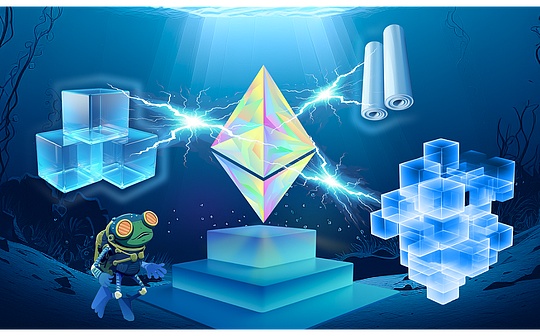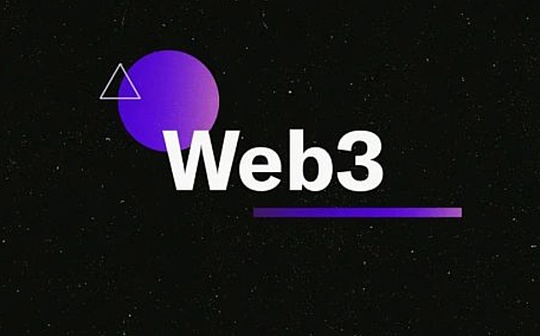
Author: ADAM SIMMONS, Translation: Vernacular Blockchain
2024 is a critical year for the cryptocurrency industry, facing challenges such as scalability, user-friendliness and security, but the emergence of a new generation of networks offers hope to realize the vision of a decentralized financial system.
2024 is expected to be one of the most important year for the crypto industry to date.
However, in the weeks following the highly anticipated Bitcoin halving event, Bitcoin’s price has fallen by 11%.Apart from the approval of the Bitcoin ETF, this year has been actually a disappointment for the industry, with little progress despite a lot of work done during the bear market.
However, it is not the time to make a final assessment of 2024.We haven’t even passed half of the year, and the impact of halving usually takes several months to appear in the past cycle.
But perhaps there is a more important question to be asked.Although in Bitcoin’s white paper, Satoshi Nakamoto outlined the vision of a peer-to-peer electronic cash version 15 years ago, why has encryption and Web3 not been able to achieve this vision so far?What is needed to fulfill the industry’s commitments?
1. Is decentralized cash the real goal?
Proposing decentralized e-cash in 2008 might be a bold statement, but in retrospect, I think that is equivalent to describing the main benefit of the Internet as being able to send e-mails.
Payments account for a relatively small proportion of the global financial system.With the development of smart contracts, the possibility of decentralized ledger technology has been greatly expanded, thus providing a more efficient, open and competitive global financial system.
At DeFiSummer in 2020, decentralized financial applications have found true product market adaptability.Decentralized trading platforms like Uniswap create all markets and no longer need market makers.A mortgage loan agreement like Aave allows holders to generate revenue when leveraging the token for other activities, including traditionally impossible products such as Lightning Loans.
Although the subsequent momentum has weakened significantly, one of the important reasons is the scalability issue of Ethereum, this field has made rapid progress during the bear market.One of the most eye-catching changes is that DeFi has gradually changed from mainly interaction between users and decentralized applications to interaction between decentralized applications, which is similar to the development of Web2, where most of the interactions are APIs.Driven.
Now, in 2024, terms like real-world assets (RWAs), decentralized physical infrastructure (DePIN), and digital identity are starting to attract attention.While they have gorgeous new names, many will remember these concepts similar to those of the ICO era.The difference is that now combines innovations with decentralized finance, which have clear economic and practical benefits for “taking everything as tokenized”.
In my opinion, this evolution is also the evolution of Satoshi Nakamoto’s vision for the evolution of global decentralized currency into global decentralized programmable assets.But if that’s true, then why haven’t we seen the explosive growth this revolution will cause?
2. Obstacles to large-scale adoption
The recent approval of Bitcoin ETF undeniably marks Bitcoin’s entry into the mainstream financial system, and as more institutional capital pours into the industry, institutional investors can now participate in cryptocurrencies through regulated entities, making those more cautiouspeople are involved in a thriving asset class.While this increases the legitimacy of the cryptocurrency space, concerns also raise concerns about Bitcoin’s status as a viable alternative currency system.
At the same time, the limited capacity of Bitcoin blockchain when executing transactions will become increasingly apparent with the development of the network and the increase in usage.The Proof of Work (PoW) mechanism is the most important constraint for Bitcoin, which indicates the need for a new first-tier solution.This process consumes a lot of energy and manpower, reducing the speed of transaction execution.Its high reliance on energy leads to increased electricity consumption, raising concerns about its environmental impact.
Ethereum initially addressed the shortcomings of Bitcoin by using smart contracts to execute programmable currencies.Despite its good intentions, Ethereum failed in both ways: 1) the network is basically not scalable, and 2) it does not apply as a programming language.
The Layer2 solution was built to solve the scalability problem of Ethereum.However, they end up being just a stopgap measure, introducing greater fragmentation and vulnerability.It is worth noting that developing DeFi applications requires extremely high levels of technical knowledge, far exceeding the level of typical developers.The Solidity language designed specifically for Ethereum smart contracts is well known for its difficulty in mastering.These barriers to entry hinder higher levels of growth and competition between dapps, which are necessary to promote mainstream adoption.
What is even more worrying is that despite the high level of developers in the Ethereum community, security issues remain a persistent issue, with billions of dollars in vulnerabilities and security vulnerabilities constantly emerging within the ecosystem.From the first DAO attack in 2016 to the loss of billions of dollars per year, Ethereum has repeatedly proven that it is not suitable for developers to develop secure DeFi applications so that users can confidently participate.
3. Direction of progress
The expansion of other networks based on the concept of Bitcoin proves that its goal to become a monetary system is being achieved.However, in order to truly achieve widespread use of cryptocurrencies and align with Satoshi Nakamoto’s original vision, blockchain must be scalable and easy to program.
While Ethereum and its range of Layer2 solutions attempt to solve some of these challenges, they also bring new problems.Early networks such as Solana have made comparable progress in some ways, but are still far from the level required to build a global asset layer.
With the surge in the next generation of layer one networks challenging Bitcoin and Ethereum, end users and developers are gradually equipping the necessary tools to build and use intuitive, secure and powerful Web3 applications, which provides a viableway forward.
To sum up, some people may think that the future conceived by Satoshi Nakamoto for Bitcoin can only be realized when Bitcoin does not exist.








